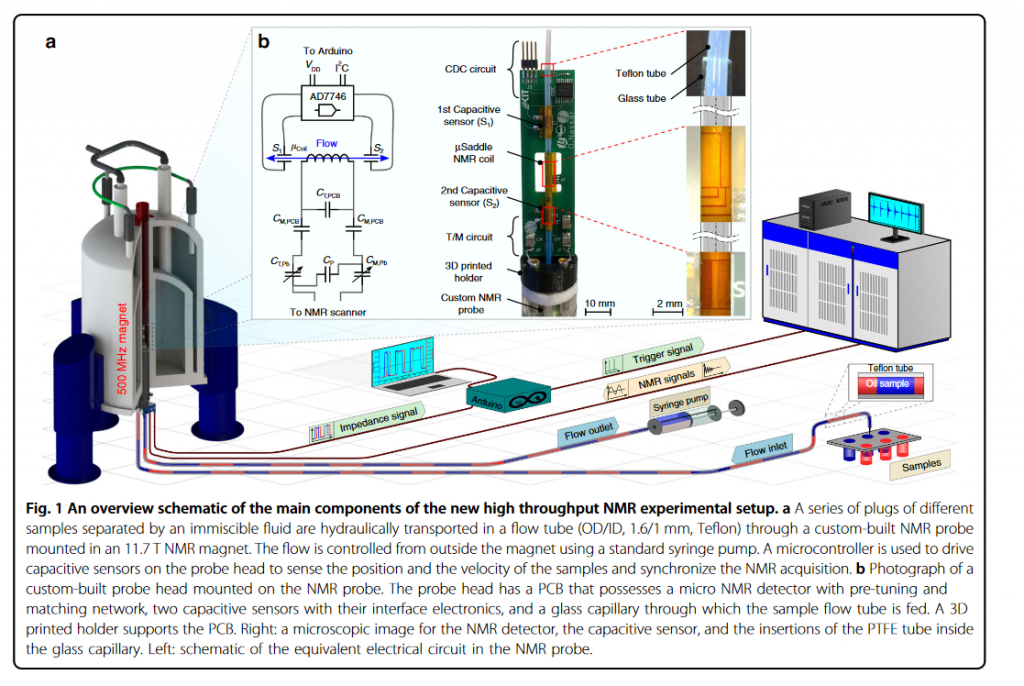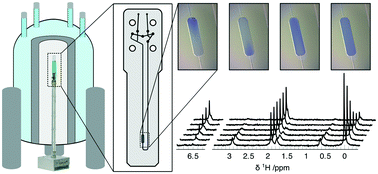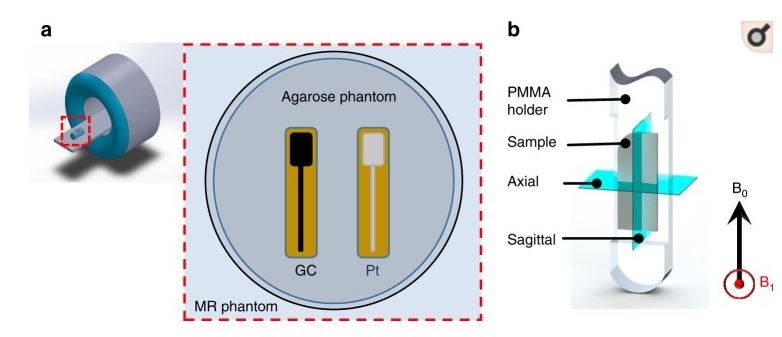Omar Nassar, Mazin Jouda, Michael Rapp, Dario Mager, Jan G. Korvink & Neil MacKinnon
Microsystems & Nanoengineering, 2021
A novel approach for automated high throughput NMR spectroscopy with improved mass-sensitivity is accomplished by integrating microfluidic technologies and micro-NMR resonators. A flow system is utilized to transport a sample of interest from outside the NMR magnet through the NMR detector, circumventing the relatively vast dead volume in the supplying tube by loading a series of individual sample plugs separated by an immiscible fluid. This dual-phase flow demands a real-time robust sensing system to track the sample position and velocities and synchronize the NMR acquisition. In this contribution, we describe an NMR probe head that possesses a microfluidic system featuring: (i) a micro saddle coil for NMR spectroscopy and (ii) a pair of interdigitated capacitive sensors flanking the NMR detector for continuous position and velocity monitoring of the plugs with respect to the NMR detector. The system was successfully tested for automating flow-based measurement in a 500 MHz NMR system, enabling high resolution spectroscopy and NMR sensitivity of 2.18 nmol s1/2 with the flow sensors in operation. The flow sensors featured sensitivity to an absolute difference of 0.2 in relative permittivity, enabling distinction between most common solvents. It was demonstrated that a fully automated NMR measurement of nine individual 120 μL samples could be done within 3.6 min or effectively 15.3 s per sample.






